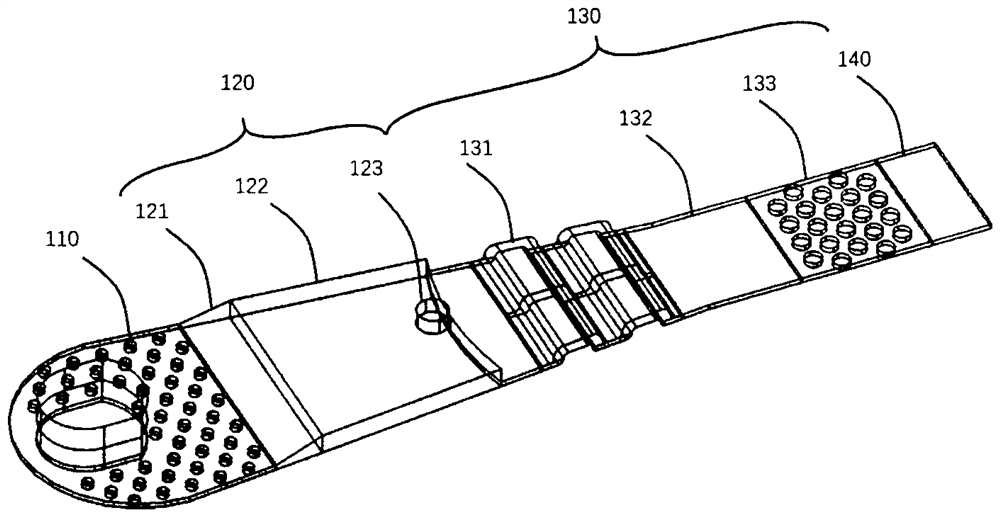Self-driven micro-fluidic chip
A self-driving micro-chip technology, applied in laboratory appliances, laboratory containers, chemical instruments and methods, etc., can solve the problems of lack of effective structural design, reduce the possibility of air bubbles, enhance efficiency, and simplify design Effect
- Summary
- Abstract
- Description
- Claims
- Application Information
AI Technical Summary
Problems solved by technology
Method used
Image
Examples
Embodiment approach
[0023] figure 1 It is a schematic diagram of the overall structure of the flow channel of the microfluidic chip of the present invention, which is divided into four parts as a whole, namely, 110 sample injection area, 120 antibody release area, 130 channel detection area, and 140 front end of waste liquid area. The part displayed as a whole is the flow channel of the microfluidic chip, that is, the sample enters the microfluidic chip from 110, passes through the antibody release area at 120, the channel detection area at 130, and the front end of the waste liquid area at 140. In the figure: 110 is a sample injection area, which is used to inject target analyte, and many micro-columns are distributed on it, which is used to expand the specific surface area and strengthen the mixing of the sample and the pre-set at 110. Part 120 is the antibody release area, wherein 121 is the front end of the antibody release area, which acts as a guide. The initial height of the front end of t...
PUM
 Login to View More
Login to View More Abstract
Description
Claims
Application Information
 Login to View More
Login to View More - R&D
- Intellectual Property
- Life Sciences
- Materials
- Tech Scout
- Unparalleled Data Quality
- Higher Quality Content
- 60% Fewer Hallucinations
Browse by: Latest US Patents, China's latest patents, Technical Efficacy Thesaurus, Application Domain, Technology Topic, Popular Technical Reports.
© 2025 PatSnap. All rights reserved.Legal|Privacy policy|Modern Slavery Act Transparency Statement|Sitemap|About US| Contact US: help@patsnap.com



